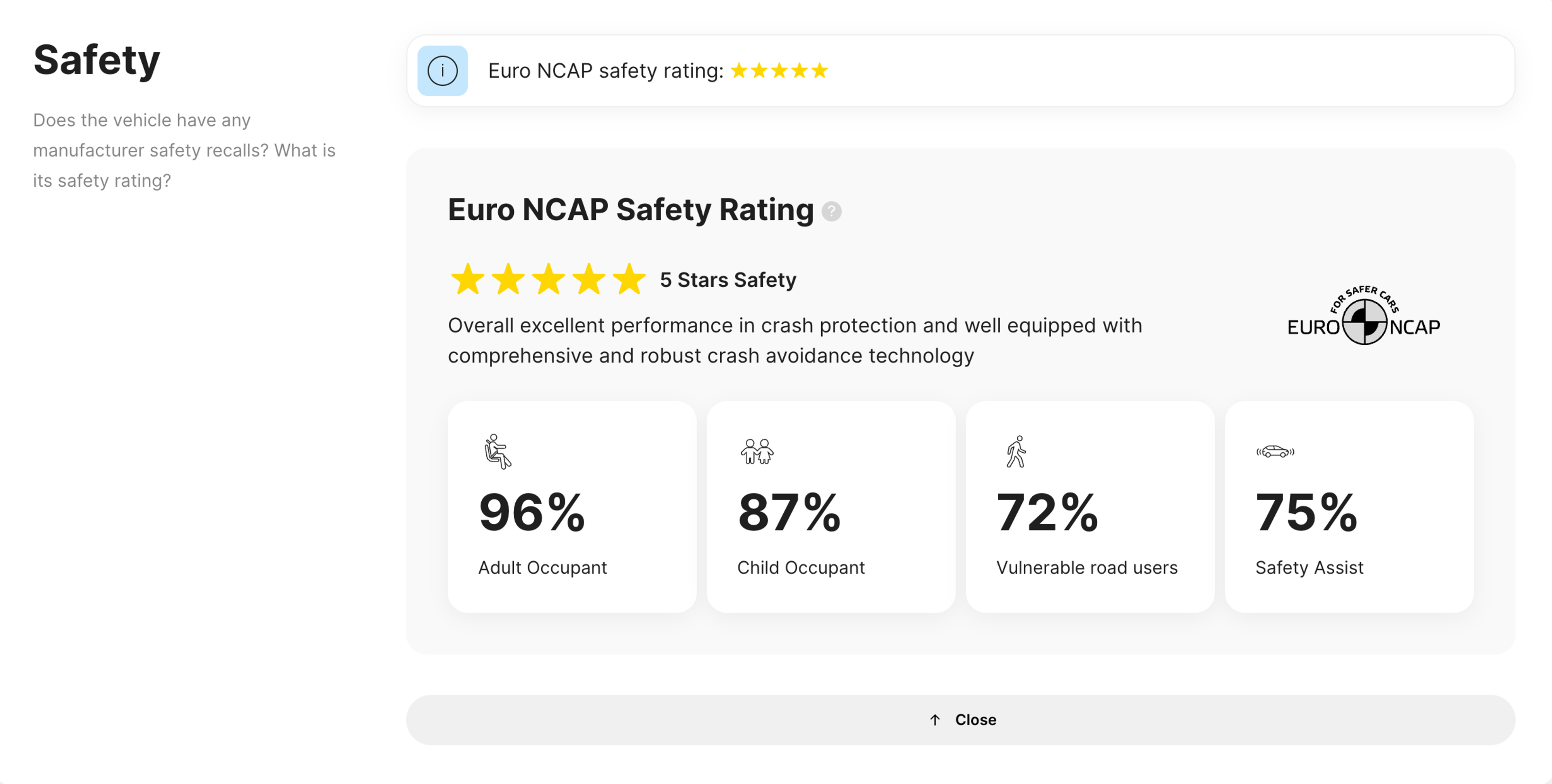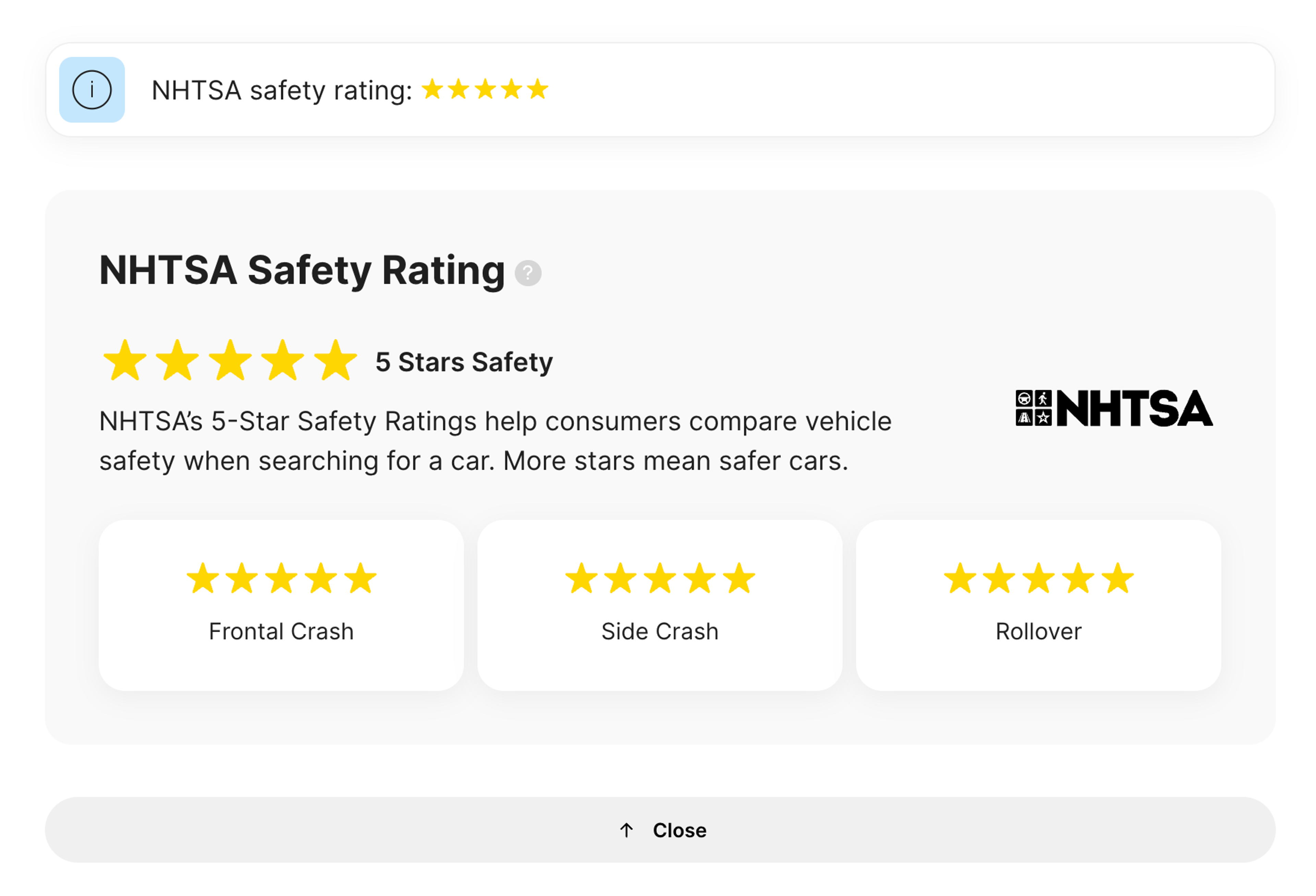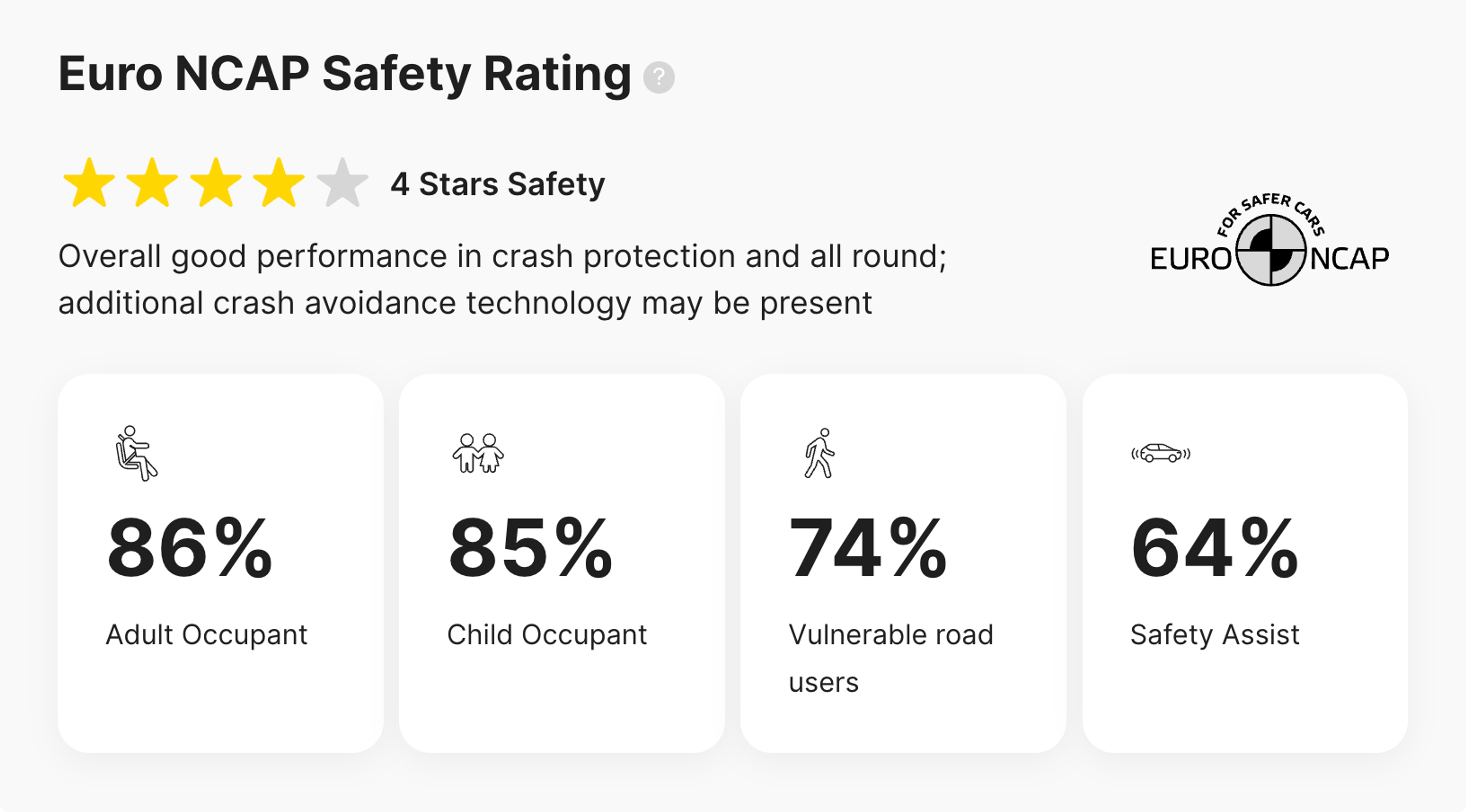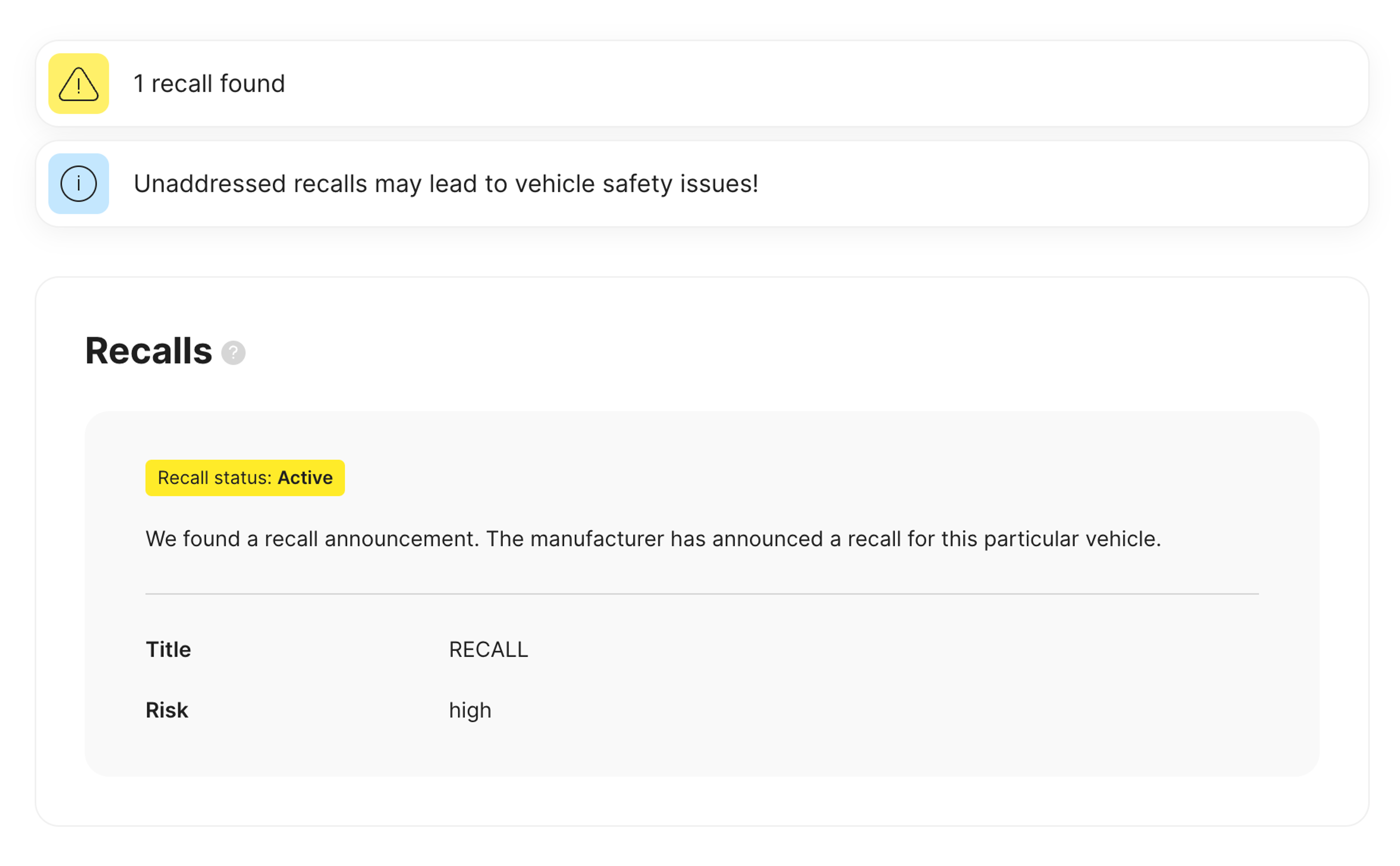10/04/2024
New carVertical report Safety feature – avoid dangerous vehicles

Not all vehicles are equally safe and reliable, so doing a safety check is crucial when buying a car. But how many of us do?
We’re thrilled to introduce the Safety feature to our reports. Alongside other essential data, users can now easily access a vehicle’s safety information, including safety ratings and recalls, in one place.
This addition aims to help used car buyers understand how safe the vehicle is and make better purchase decisions.

Need help buying a used car?
Enter a VIN code to learn more about any vehicle!
Introducing the carVertical report Safety feature
From now on, carVertical vehicle history reports will include a Safety section if vehicle safety information is available. This new feature will enable you to:
- Quickly check the vehicle’s safety ratings and
- Learn about registered car recalls

Safety ratings
Depending on your location, your vehicle history report will include safety ratings from one of the three main car safety assessment programmes: NHTSA, Euro NCAP, or ANCAP.

The safety ratings part includes:
- An overall vehicle safety score (from 1 to 5 stars)
- Explanation of the score
- Results for specific tested areas (in percentage (Euro NCAP and ANCAP) or stars (NHTSA))

Safety ratings allow you to learn about the vehicle’s ability to protect passengers in various scenarios and better assess the effectiveness of its safety features, such as airbags, seat belts, and advanced driver assistance systems (ADAS).
Hence, this can help you identify cars with higher safety standards, potentially reducing the risk of injury or even fatalities in accidents.
Safety recalls

Additionally, the Safety section of the report will provide information about car safety recalls, if any. Next to each recall, you will see its status (Active, Solved, or Unknown) and other available information, such as when it was announced, recall number, risk, and similar.
Some recalls can also include a more comprehensive description of the issue to help you better understand the problem.

This particular warning is crucial for safety, as used car owners are not always aware of recalls affecting their vehicles.
This happens mostly because manufacturers send recall notices only once – to the current owner. Due to factors like secondhand ownership or limited awareness of the automotive news, you may not even know that a car you own or are about to own is dangerous to drive.

Looking for a reliable car?
A well-maintained and undamaged car is the most reliable! Check any VIN code to make sure you're not buying a wreck:
If a vehicle’s safety performance score is low or the recall indicates a high safety risk and repairs are not promptly available, it's generally recommended to consider other options.
What are car safety ratings and how are they calculated?
A car safety rating is an evaluation of how well a vehicle protects its occupants in emergency situations (e.g., crashes). It’s determined based on a series of internationally recognized crash tests and safety assessments conducted by independent organizations or governmental agencies, such as the:
- National Highway Traffic Safety Administration (NHTSA) and the Insurance Institute for Highway Safety (IIHS) in the United States.
- European New Car Assessment Programme (Euro NCAP).
- Australasian New Car Assessment Program (ANCAP), and other regional or national agencies globally.
Key assessment areas
Since all these organizations operate in different regions, there may be differences in the specific tests conducted and the criteria used.
NHTSA
The NHTSA uses the 5-Star Safety Ratings program. The agency conducts frontal, side, and rollover resistance tests, which account for the majority of crashes in the country.
The Overall Vehicle Score considers the chances of getting hurt in these accidents.
Euro NCAP
Euro NCAP ratings also use a five-star system, calculated based on the assessment of four areas:
- Adult Occupant Protection (for the driver and passenger), determined from frontal impact, lateral impact, and whiplash tests.
- Child Occupant Protection, determined by testing how well child safety features work.
- Vulnerable Road Users, determined by testing how well vehicles protect vulnerable road users – pedestrians and cyclists – with whom they might collide.
- Safety Assist, determined by evaluating driver-assistance and crash-avoidance technologies.
The five-star rating was introduced to add more flexibility to the previous rating scheme, but you can generally find both the overall rating and individual results for the mentioned areas.
ANCAP
ANCAP ratings are largely aligned with the organization’s European counterpart, Euro NCAP. Therefore, the overall score is also determined based on crash tests and safety assessments of on-board safety features.
In some cases, ANCAP may adapt certain aspects to better suit the Australian and New Zealand markets.
What are car recalls and why do they matter?
A car recall is a process initiated to address and fix safety-related defects found in vehicles already sold to consumers. These can be anything from faulty radio wiring to problems with engine components.
The process of initiating car recalls varies slightly across regions. While car recalls are typically issued by manufacturers, relevant authorities (e.g., the NHTSA or European Commission) can also initiate a recall after receiving multiple reports on the same safety-related issue.
Overall, a car recall is critical for ensuring the safety and reliability of vehicles on the road. Acting on an issued recall promptly can help prevent accidents and injuries resulting from the identified defects.
